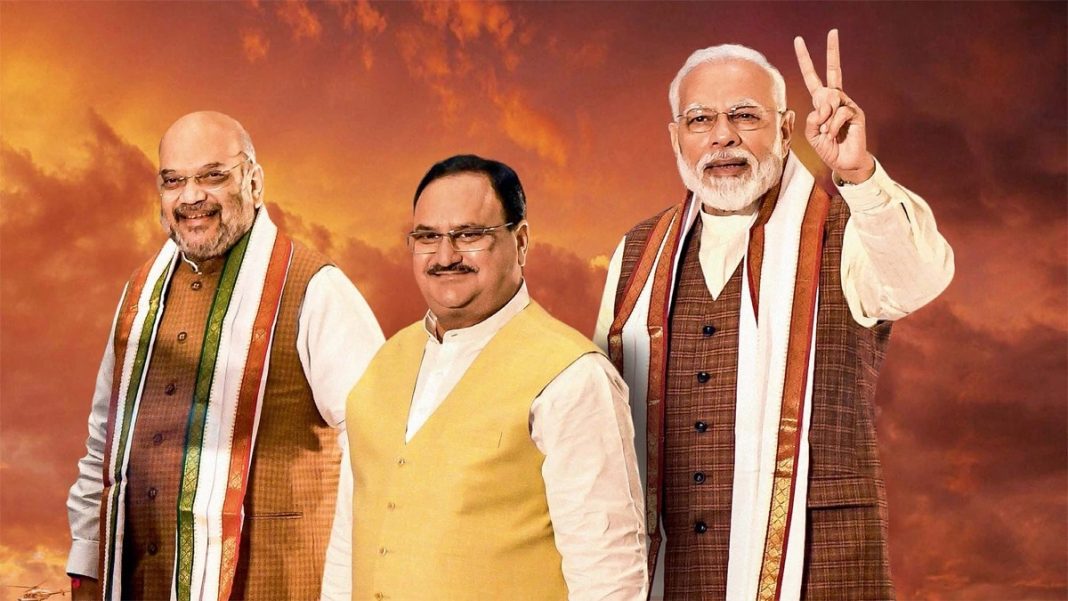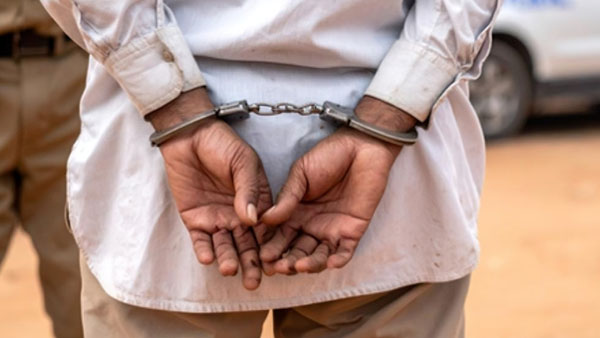By Satyabrat Borah
The Bharatiya Janata Party (BJP) has undeniably reshaped the landscape of Indian politics over the past few decades. Since its formation in 1980, the party has grown from a modest outfit with limited influence to a dominant force that has governed India at the national level and in numerous states, including Assam. Its remarkable victories in the 2014 and 2019 general elections, coupled with its ability to forge alliances and expand its footprint, have made it a central player in the country’s political arena. Yet, as we look toward the future, questions arise: What lies ahead for the BJP? Will it maintain its dominance over the next decade? Who might emerge as its new rivals? These are complex questions, and to answer them, we must delve into the BJP’s strengths, vulnerabilities, and the evolving political dynamics of India, with a particular lens on Assam, where the party has made significant inroads.
The BJP’s rise is a story of strategic brilliance, ideological clarity, and organizational prowess. Rooted in the ideology of Hindutva and backed by the Rashtriya Swayamsevak Sangh (RSS), the party has built a robust network that spans from rural hamlets to urban centers. This grassroots machinery has allowed the BJP to connect with diverse sections of society, from farmers to urban professionals. At the heart of its success has been Prime Minister Narendra Modi, whose charisma, oratory, and development-focused narrative have struck a chord with millions. His leadership has not only unified the party but also given it a larger-than-life image. In Assam, the BJP’s victories in the 2016 and 2021 state assembly elections under leaders like Himanta Biswa Sarma have solidified its position in a region historically dominated by the Congress and regional players. The party’s promises of development, curbing illegal immigration, and implementing the Assam Accord have resonated with many in the state, though not without controversy.
Looking ahead, the BJP’s future over the next decade hinges on several factors. Its organizational strength is one of its greatest assets. The RSS’s cadre-based structure ensures a steady supply of dedicated workers who can mobilize voters and spread the party’s message. The BJP’s focus on development encapsulated in slogans like “Sabka Saath, Sabka Vikas” (Together with All, Development for All) has broadened its appeal beyond its traditional voter base. In Assam, for instance, infrastructure projects like new highways, bridges, and schemes for tea garden workers have been highlighted as achievements. However, not all promises have been fulfilled. A 2019 report from an Assam-based news portal noted that the BJP’s decision to release a “vision document” instead of a detailed election manifesto disappointed some voters who expected concrete commitments. This suggests that while the party has mastered the art of narrative-building, delivering on promises remains a critical challenge.
Another key factor in the BJP’s future is its reliance on Narendra Modi’s leadership. Modi’s personal popularity has been a game-changer, but what happens after his tenure? At 75 years old in 2025, questions about succession loom large. Leaders like Amit Shah have demonstrated organizational acumen, but whether they can replicate Modi’s mass appeal is uncertain. In Assam, Himanta Biswa Sarma has emerged as a dynamic leader, steering the party to consecutive victories. Yet, murmurs of discontent exist, particularly among tribal communities who feel that promises of greater autonomy and development have not been fully realized. For the BJP to sustain its dominance, it must cultivate a new generation of leaders who can connect with voters on both ideological and developmental fronts. Without this, the party risks losing its momentum.
The BJP’s ideological stance, centered on Hindutva, is both a strength and a potential vulnerability. It has galvanized a significant portion of the population, particularly in northern and western India, but it has also alienated others, especially in regions with diverse religious and ethnic identities. In Assam, the party’s focus on issues like illegal immigration and the Citizenship Amendment Act (CAA) has polarized opinions. While some see these as necessary for protecting indigenous interests, others view them as divisive. A 2025 X post by a user from Assam expressed frustration over the CAA, claiming it fueled mistrust among communities. If the BJP leans too heavily on divisive issues, it could lose support among moderates and minorities, paving the way for rivals to capitalize on this discontent.
So, who might challenge the BJP in the coming decade? The Indian National Congress, despite its weakened state, remains the most prominent national alternative. In Assam, Congress leader Gaurav Gogoi has been vocal about his party’s plans to challenge the BJP in the 2026 state elections. In a July 2025 statement, he accused the BJP of relying on “fear, violence, and division” and predicted a Congress resurgence. However, the Congress faces significant hurdles. Its organizational structure is weaker than the BJP’s, and it struggles to present a cohesive narrative. Rahul Gandhi’s leadership has shown signs of improvement, particularly after the 2024 elections where Congress made modest gains, but it still lacks the charisma and organizational depth to match the BJP’s juggernaut. For Congress to emerge as a serious contender, it must rebuild its grassroots presence and offer a compelling alternative vision.
Beyond Congress, regional parties could pose a challenge, particularly in states like Assam where local issues dominate. The Asom Gana Parishad (AGP), a BJP ally, and the All India United Democratic Front (AIUDF) have influence but lack the organizational strength to rival the BJP independently. The AGP, rooted in the Assam Movement, has seen its influence wane, while the AIUDF’s appeal is largely confined to minority communities. However, regional parties can disrupt the BJP’s dominance if they unite around local issues like land rights, flood management, and tribal welfare. For instance, the failure to fully implement the Assam Accord remains a sore point, and a regional force that effectively champions this cause could gain traction.
Nationally, the Aam Aadmi Party (AAP) is an intriguing wildcard. Its success in Delhi and Punjab shows that a new party with a focus on governance and anti-corruption can disrupt the status quo. AAP’s emphasis on education and healthcare could appeal to younger voters, a demographic that will play a crucial role in the next decade. However, AAP’s presence in Assam remains negligible, and scaling up nationally will require overcoming significant logistical and financial challenges. A 2025 X post by a political analyst suggested that AAP could emerge as a “third force” if it expands its footprint in states like Gujarat and Haryana, but its ability to challenge the BJP in the Northeast is uncertain.
The BJP’s future will also be shaped by broader socio-economic trends. India’s youth, who make up a significant portion of the electorate, are increasingly focused on jobs, education, and environmental issues. Rising unemployment and inflation, highlighted in several 2025 news reports, could erode the BJP’s support if not addressed. In Assam, the tea garden workers and rural communities face persistent economic challenges, and the BJP’s ability to deliver tangible benefits will be critical. A 2025 X post from an Assamese user lamented the lack of job opportunities for local youth, reflecting a sentiment that could fuel discontent if ignored. The party’s digital savviness, evident in its mastery of social media, will help it stay connected with younger voters, but rhetoric alone won’t suffice.
In Assam, the BJP’s future hinges on its ability to balance regional aspirations with its national agenda. Issues like flood management, illegal immigration, and tribal rights are deeply emotive. The party’s efforts to resolve these through initiatives like the Clause 6 committee of the Assam Accord or infrastructure development have been partially successful but face criticism for slow progress. If the BJP fails to deliver, regional forces or a revitalized Congress could exploit these gaps. Conversely, if it addresses these issues effectively, it could cement its dominance in the state for years to come.
Nationally, the BJP’s ability to adapt to changing voter priorities will be key. The next decade will see a more urbanized, tech-savvy, and aspirational India. The party’s focus on digital governance and initiatives like “Digital India” aligns with this shift, but it must also tackle pressing issues like climate change and economic inequality. The rise of new political voices whether from within the BJP, opposition parties, or entirely new movements will depend on who best captures the imagination of this evolving electorate.
The BJP’s future over the next decade looks promising but not guaranteed. Its organizational strength, ideological clarity, and development narrative give it an edge, but challenges like succession, regional discontent, and economic pressures could test its resilience. Rivals like Congress, regional parties, and emerging players like AAP have opportunities to challenge the BJP, but they must overcome their own limitations. In Assam, the BJP’s success will depend on addressing local issues while maintaining its national appeal. Politics is a dynamic game, and the BJP’s ability to evolve with the times will determine whether it remains a juggernaut or faces an unexpected reckoning. For the people of Assam and India, the hope is that all parties prioritize progress over polarization, ensuring a future that reflects the aspirations of a diverse and vibrant nation.




